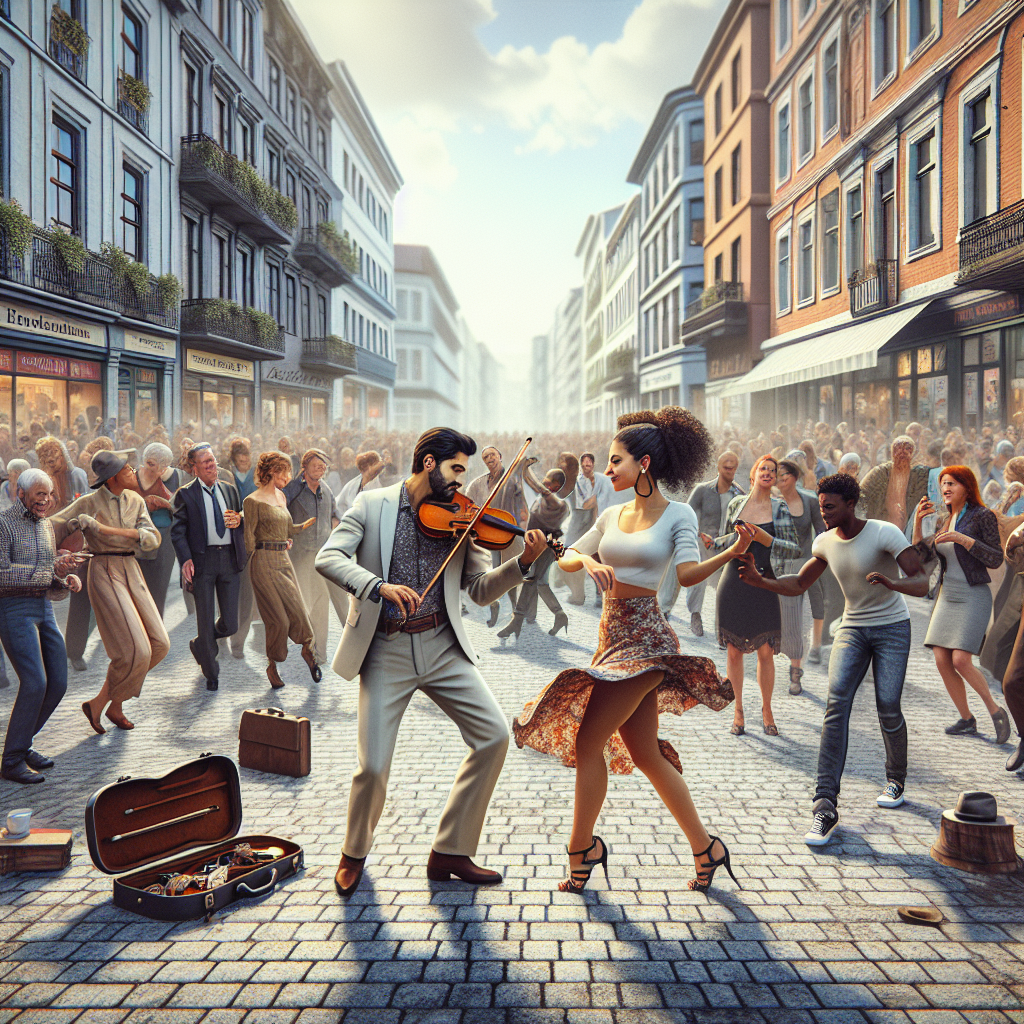
Analyzing the Future Trends of the Theatre of the Oppressed in Recife
Recife, a vibrant city in Brazil, is witnessing an exciting convergence of the Theatre of the Oppressed and the streets. This unique fusion is generating new possibilities for artistic expression and social change. In this article, we will delve into the key points of this phenomenon and explore the potential future trends that might emerge as a result. We will also provide our own predictions and recommendations for the industry.
The Power of the Theatre of the Oppressed
The Theatre of the Oppressed, developed by Brazilian visionary Augusto Boal, is a form of participatory theater that aims to empower marginalized communities and facilitate dialogue on social issues. By engaging both actors and spectators, this form of theater challenges oppressive systems and encourages collective problem-solving.
Recife, with its deep cultural roots and history of social inequality, provides an ideal backdrop for the Theatre of the Oppressed. The city has long been a hub for artistic expression and activism, making it a fertile ground for the convergence of this theatrical form with the streets.
An Exciting Convergence
The convergence of the Theatre of the Oppressed and the streets of Recife opens up a world of possibilities for artistic experimentation and social engagement. Street performances, flash mobs, and public interventions are becoming increasingly common, enabling artists and activists to reach a wider audience and have a direct impact on public spaces.
What sets this convergence apart is the ability to merge traditional theater techniques with real-life scenarios, creating powerful theatrical experiences that resonate deeply with the audience. By taking theater out of traditional venues and into the streets, artists are able to break down barriers and engage with communities on a more personal level.
Potential Future Trends
As this convergence gains momentum, several potential future trends can be identified:
- Interactive Street Performances: We can expect to see a rise in interactive street performances where spectators become active participants in the theater. This breaks down the barrier between performer and audience, creating an immersive experience that fosters dialogue and collective action.
- Integration of Technology: With the advancement of technology, we can anticipate the integration of digital and virtual elements in street performances. Augmented reality, virtual reality, and social media platforms could be used as tools to enhance the impact and reach of these theatrical experiences.
- Collaborations with Local Communities: The convergence of the Theatre of the Oppressed with the streets necessitates close collaborations with local communities. Artists and activists will need to actively engage with community members, listening to their stories and concerns, in order to create performances that truly resonate and address their needs.
- International Exchange and Collaboration: Recife’s unique convergence has the potential to inspire other cities around the world. We might see an increase in international exchange programs and collaborations, where artists from different parts of the globe come together to learn and share techniques, leading to a broader impact on social change.
Predictions and Recommendations
Based on these potential future trends, we make the following predictions and recommendations for the Theatre of the Oppressed industry in Recife:
- Diversify Funding Sources: As street performances become more prominent, it becomes essential for artists and organizations to diversify their sources of funding. Seeking partnerships with local businesses, NGOs, and governmental institutions can ensure financial sustainability and wider reach.
- Invest in Technology and Skills: Embracing technology will be crucial for the growth of this industry. Artists should invest in developing digital skills and exploring innovative ways of integrating technology into their performances, creating a unique edge in a competitive market.
- Strengthen Community Engagement: Building strong relationships with local communities should remain a priority. Artists must continue to actively engage and listen to community members, ensuring that performances are relevant and reflective of their needs and aspirations.
- Promote International Collaboration: Establishing networks and partnerships with artists and organizations from different parts of the world can enrich the Theatre of the Oppressed movement in Recife. This exchange of ideas and techniques can further expand the influence and effectiveness of this theatrical form.
“The convergence of the Theatre of the Oppressed with the streets opens up new possibilities for artistic expression and social change in Recife and beyond.”
In conclusion, the convergence of the Theatre of the Oppressed with the streets of Recife is an exciting development that has the potential to shape the future of artistic expression and social activism. By embracing interactive street performances, integrating technology, collaborating with local communities, and promoting international exchange, this industry can continue to thrive and create a lasting impact on society.
References:
- Boal, A. (1979). Theatre of the Oppressed. New York: Theatre Communications Group.
- Téllez, F. I. (2017). Performing a Revolution: The Theatre of the Oppressed in Brazil. Global South Studies Center. Retrieved from https://www.gssc.uni-koeln.de/aktuelles/single-news/-c23d4d9362
- Berta, N. (2016). Street Performance and the Creative Revolution: The Theatre of the Oppressed in Recife. Critical Stages. Retrieved from http://www.critical-stages.org/14/street-performance-and-the-creative-revolution-the-theatre-of-the-oppressed-in-recife/
